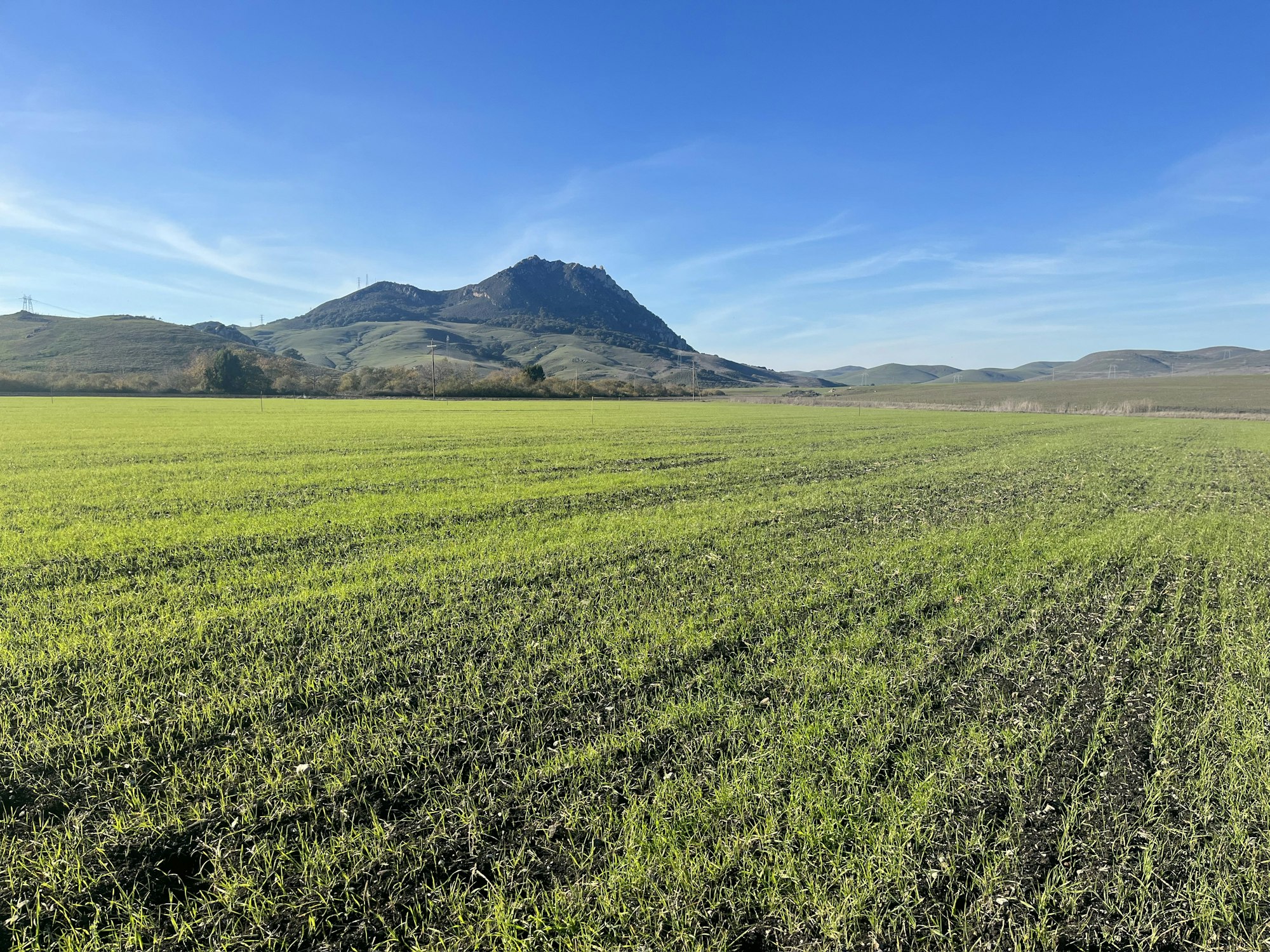Carbon Farm Plans

Agriculture and working landscapes are a necessary part of modern civilization, but they tend to be a major contributor of greenhouse gas (GHG) emissions and, in turn, drive climate change. To counter this, many management techniques can sequester carbon and represent a powerful solution to climate change. Carbon Farming involves implementing practices that are known to improve the rate at which CO2 is removed from the atmosphere and converted to plant material and/or soil organic matter.
At least 32 on-farm Natural Resource Conservation Service (NRCS) practices are known to improve soil health and sequester carbon, while producing important co-benefits—increased water retention, hydrological function, biodiversity and resilience.
To create a Carbon Farm Plan (CFP), the Coastal San Luis Resource Conservation District (CSLRCD) team works with a farmer, rancher or land manager to assess all of the opportunities to reduce greenhouse gas (GHG) emissions and to capitalize on the carbon sequestration potential of their property.
CAL POLY RANCHES CARBON FARM PLAN—COMPLETED JANUARY 2020
CSLRCD staff teamed up with an interdisciplinary team of California Polytechnic State University (Cal Poly) staff, faculty and students to develop the Cal Poly Ranches Carbon Farm Plan (CFP). The plan addresses the 4,000 acres of rangeland under Cal Poly’s grazing management. The team compiled baseline data—including soil, ecological sites, climate, topography and hydrology—to understand current conditions on the ranch.
CSLRCD staff and Cal Poly land managers then identified resource concerns and opportunities for carbon sequestration on each ranch, based on current conditions. Examples of identified opportunities include Silvopasture, compost application and riparian restoration.
Once existing conditions on the ranches were assessed, the amount of carbon associated with each practice was estimated by using assumptions built into a tool called the COMET-Planner. It compared the changes in carbon capture and greenhouse gas (GHG) emissions between current and alternative future practices. CSLRCD holds workshops and seminars on the CFP for College of Agriculture, Food and Environmental Sciences (CAFES) students and the wider campus.
The working ranches on Cal Poly’s campus offer an unmatched opportunity to widely demonstrate the benefits of developing a CFP. The nexus between active land management and academia broadens opportunities for outreach and education to current and future land managers.
Based on this completed Carbon Farm Plan, CSLRCD was awarded a CDFA Healthy Soils Demonstration Project in 2020 that applied compost and used reduced tillage and cover cropping to demonstrate carbon sequestration potential.
Read the pdf, “Cal Poly Ranches Carbon Farm Plan 2020.”.pdfRCD Contact: Hayley Barnes, hbarnes@coastalrcd.org

CITY OF SAN LUIS OBISPO CARBON FARM PLAN
In an effort to achieve carbon neutrality by 2035, the City of San Luis Obispo (City) has set ambitious goals across five key pillars that will form the basis of the City’s Climate Action Plan Update. Included as one of these key pillars is carbon sequestration. The City owns many open spaces and an agricultural reserve that places them in a position to manage these landscapes for carbon sequestration to help achieve carbon neutrality.

To support these efforts, Coastal San Luis Resource Conservation District (CSLRCD) and the City collaborated to develop a CFP and pilot demonstration project for the City’s Johnson Ranch Open Space and Calle Joaquin Agricultural Reserve, or “City Farm.” This CFP will serve as a model for their other open spaces and as an educational tool for agriculturalists and the general public.
Partners: City Farm SLO, NRCS, Cal Poly
Funders: City of San Luis Obispo
RCD Contact: Hayley Barnes, hbarnes@coastalrcd.org
